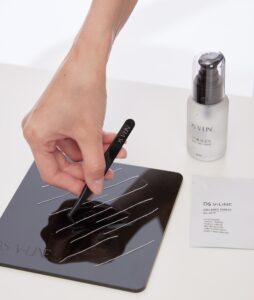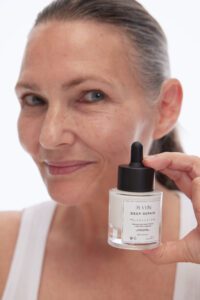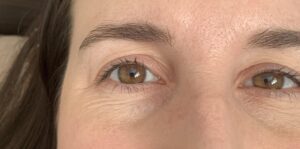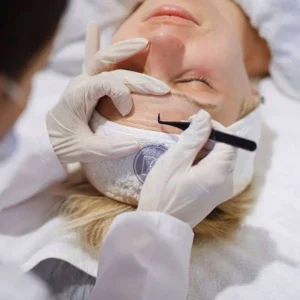
How many types of stretch marks are there?
There are two types of stretch marks: superficial stretch marks and deep stretch marks, which vary depending on the degree of damage to the skin’s connective tissue. The differences between the two types are as follows:
Superficial Stretch Marks:
- Superficial stretch marks typically occur in the top layer of the skin, called the epidermis.
- They may be lighter and less pronounced.
- They tend to improve over time and can diminish with the skin’s natural renewal process.
- They show faster results with the DS V-LINE STRETCH LINE technique.
Deep Stretch Marks:
- Deep stretch marks can extend into the deeper layers of the skin, including the dermis and even the hypodermis.
- They are more pronounced, wider, and more persistent.
- They can appear in red, purple, or white colors and may change color over time.
- Completely eliminating them may take a long time, but desired results can be achieved with regular sessions and maintenance.
Why has the DS STRETCH LINE technique become so popular in a short period?
Achieving comprehensive results in a short time without causing any harm to the skin may not seem easy, but we have succeeded in this process, and it has been successfully applied by many experts. Our difference lies in strengthening the skin’s connective tissue to repair stretch marks and providing a holistic approach to the area.
DS STRETCH LINE stretch mark treatment is not just a single procedure. It also:
- Helps with localized slimming
- Strengthens the skin’s barrier
- Provides a smooth skin appearance
- Increases skin elasticity
- Improves localized circulation
- Alleviates pain
- Provides relaxation
- Burns excess fat
- Enhances skin tightening and elasticity
- Detoxifies
- Prevents cellulite formation and reduces existing cellulite
- Reduces mental and physical stress.
Blogs and News
Contact
- Ataşehir, İçerenköy Mh. Tabiat sk. No:3 İstanbul, Türkiye
- +49 173 709 19 84
- +90 536 746 95 80
- info@dsvline.com
About
DS V-LINE develops its own way of skin care practices together with the products. We are in pursuit of excellence in skin care practices in DS V-LINE.
Being Europe’s best skin care brand, DS V-LINE claims to be the best in global.










